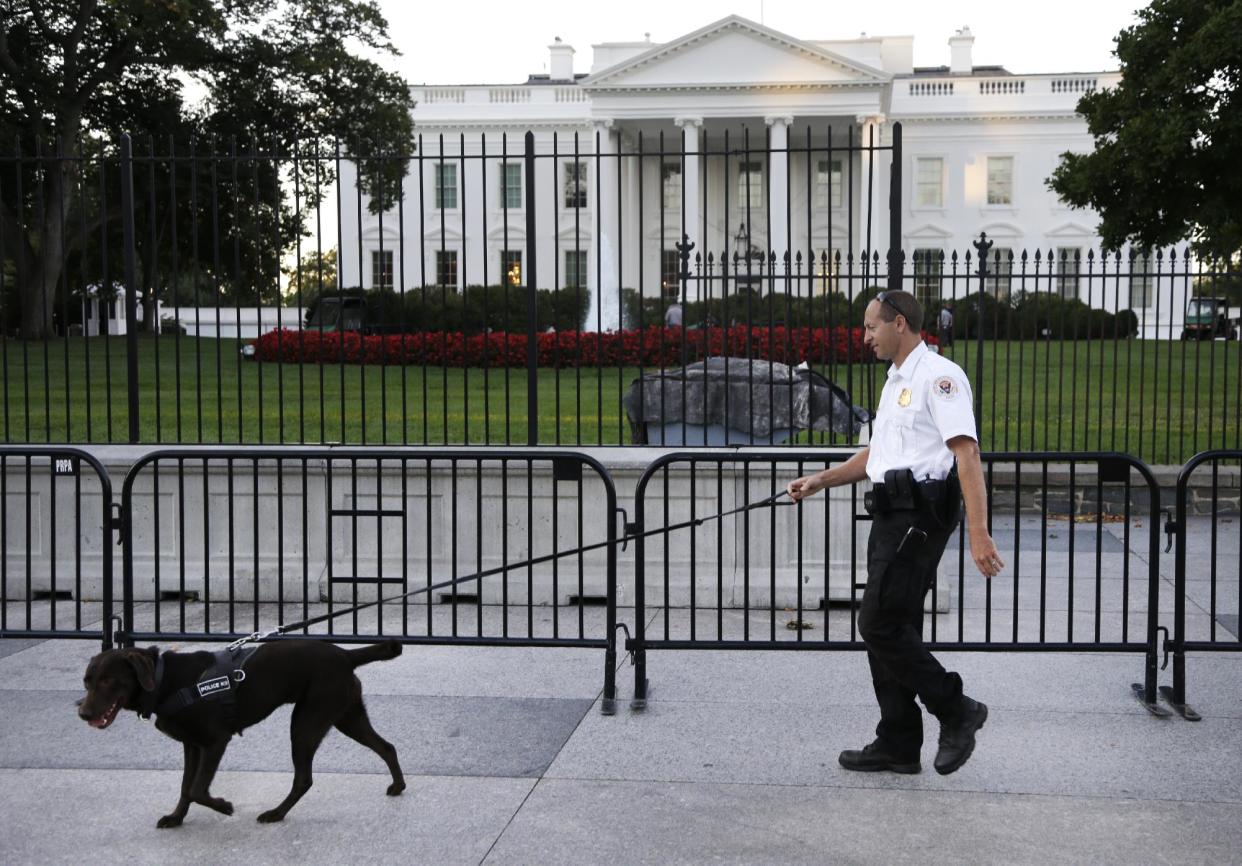White House vulnerability study in 1990s warned of fence jumpers: report

The man who jumped the White House fence, ran across the North Lawn, up the stairs and through the front door before he was stopped by the Secret Service last week shocked security experts and lawmakers.
But a secret study conducted by an elite military unit more than two decades ago found Secret Service agents were vulnerable to such an attack, the Washington Post reports.
The so-called "Red Cell" study, conducted by Delta Force and commissioned by the Secret Service, concluded that two methods that would "easily allow attackers to get inside the executive residence":
First, six to eight attackers aboard a small aircraft or helicopter could crash into the White House compound. While some would be killed in the crash or while trying to disembark, at least one or two of the attackers would make it inside the White House.
The second scenario involved at least half a dozen fence jumpers in quick succession. Officers on patrol would not be able to address every threat, the study found. At least one or two of the intruders would be able to make it into the White House.
The first was nearly realized in 1994, when Frank Eugene Corder, a 38-year-old former Army mechanic, stole a single-engine Cessna airplane and crashed it on the White House grounds, skidding across the South Lawn and slamming into a wall just below the presidential bedroom. Corder was the sole fatality.
[Related: History of security incidents at the White House]
News of the study comes as the Secret Service continues its internal investigation into Friday's breach by Omar J. Gonzalez, a 42-year-old U.S. Army veteran from Copperas Cove, Texas, who made it across the lawn and through the North Portico doors.
"Every day the Secret Service is challenged to ensure security at the White House complex while still allowing public accessibility to a national historical site," Secret Service spokesman Ed Donovan said Saturday. "Although last night the officers showed tremendous restraint and discipline in dealing with this subject, the location of Gonzalez's arrest is not acceptable."
On Monday, a federal prosecutor said Gonzalez, who was armed with a knife, had more than 800 rounds of ammunition in his car at the time of his arrest and had been arrested in July with a sniper rifle and a map on which the executive mansion was marked.
According to the criminal complaint, Gonzalez told Secret Service agents after his arrest that he was "concerned that the atmosphere was collapsing" and needed to contact the president "so he could get word out to the people." President Obama and his family had just left the White House for Camp David when Gonzalez was stopped.
On Saturday, White House spokesman Frank Benenati said the president "has full confidence in the Secret Service and is grateful to the men and women who day in and day out protect himself, his family and the White House."
On Monday, Obama reiterated his faith in the agency.
"Secret Service does a great job, and I'm grateful for the sacrifices they make on my behalf and my family’s behalf," he said.
Related video:



